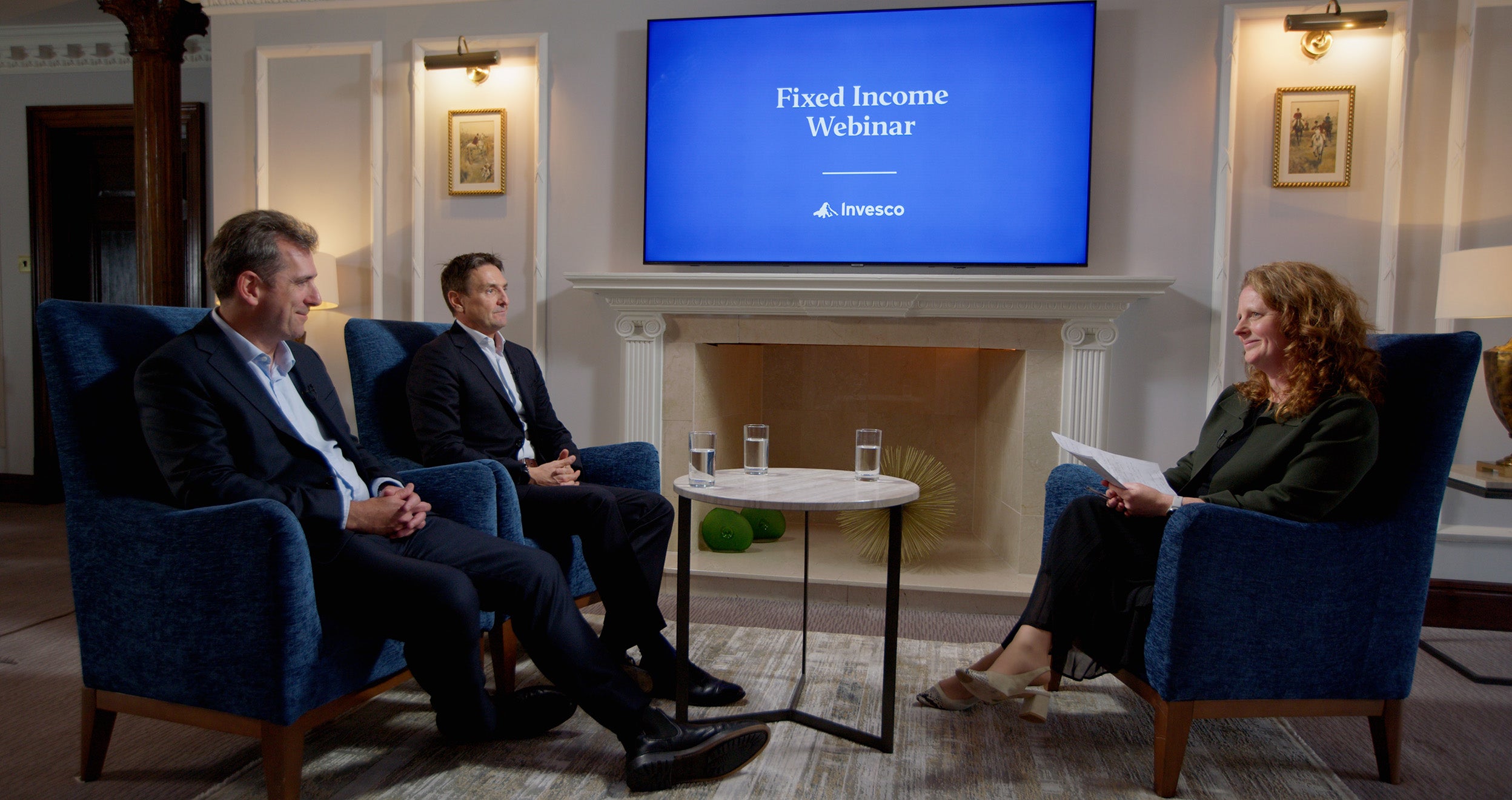
Global Fixed Income Strategy Monthly Report
In our regularly updated macroeconomic analysis we offer an outlook for interest rates and currencies – and look at which fixed income assets are favoured across a range of market environments.
Whether you’re looking for income, diversification, capital preservation or total returns, our global fixed income teams have the strategies, the scale and the flexibility needed to match your objectives.
Access this expertise through our active, passive, mainstream, innovative and ESG solutions.







Let us know your preferences to receive insights and ideas on the themes, strategies and products of most interest to you.
The aim when investing in fixed income is to preserve your wealth, while generating a steady and predictable stream of income. As the name would suggest, fixed income securities pay investors a fixed amount on a predetermined schedule. Bonds are the most common type of fixed income security, and are issued by both companies and government entities to finance day-to-day operations.
Fixed income investments can offer several important benefits to investors:
While fixed income securities are deemed less risky than equities, there are still some key things to look out for:
“Investment grade credit” is a term used to describe corporate bonds issued by high quality companies with a low risk of default. The different rating agencies (Moody’s, Standard & Poor’s and Fitch) use slightly different definitions.
High quality government bonds issued by the likes of the US Treasury, the German federal government and the Bank of England are deemed low risk. As they are backed by the government, they are incredibly unlikely to default.
In periods of economic turmoil, government bonds are typically supported by more accommodative central bank policy and “safe-haven” buying. As such, they generally fare well during periods of crisis or recession.
Historically, the high yield asset class has been able to generate high and steady income for investors willing to take on some additional credit risk. These higher coupon payments can help cushion price volatility and mitigate downside risks.
Credit or default risk is the primary risk for high yield bonds, and can result in losses due to an issuer’s inability to meet interest payments or to repay the principal sum. For this reason, thorough credit analysis is an important part of an active manager’s process when investing in these securities.
Emerging markets issue debt in both their local currency and in foreign currencies – usually US dollars.
Depending on their investment strategy and risk tolerance, investors may decide to pursue one type of investment over the other. For example, hard currency strategies are sometimes deemed less volatile than local currency strategies, as they are exposed to less currency risk. However, local debt strategies can offer the potential for attractive returns.
Private credit is an asset class that can generally be defined as non-bank lending. The private credit market typically serves borrowers that are too small to access public debt markets or that have unique circumstances and require a private lender.
Private markets offer the opportunity for investors to diversify their portfolios to meet objectives. Furthermore, private credit investments typically offer enhanced income opportunities relative to public market assets. This is to compensate investors for the additional credit and liquidity risk compared to investment grade public debt securities.
Strategic bond funds are products with flexible mandates, investing across a broad range of fixed income asset classes. The investment teams that manage these products can dynamically evolve their asset allocation as markets change.
ESG considerations can enhance an investment process by introducing another layer to the assessment of investment risk and opportunity. For example, let’s focus on the environmental aspect of “ESG” for a moment.
All sectors will need to decarbonise if the world is to achieve its net zero targets by 2050. And, as we move towards a net zero world, winners and losers will emerge as some businesses flourish and others fail to adapt. Companies that are ill-prepared or incompatible with the new economy could suffer defaults, losses and impairments. Meanwhile, those that are ahead of the curve could secure an attractive competitive position relative to peers.
Our active teams integrate ESG considerations in their fundamental research processes, carrying out their own proprietary assessments and using Invesco’s in-house ratings tool. This allows them to fill in any gaps left by holes in the third-party data. Engagement and dialogue are important parts of the process.
Our passive capabilities incorporate ESG considerations through positive and negative exclusions and, where holdings overlap, benefit from the engagement activities carried out by our active fixed income teams.
Yes, we’re continually developing innovative solutions to help our clients express their values in their fixed income portfolios. Our ESG strategies are grouped into four categories:

Emerging market local debt | Monthly macro insights
Each month, our experts share their views on the emerging market (EM) local debt asset class. Read their outlook and discover which markets they believe are presenting the most attractive opportunities.

Monthly fixed income ETF update
Bond markets struggled in March, primarily due to concerns about the potential impact of upcoming US policies. Read our latest thoughts on how fixed income markets fared during the month and what we think you should be looking out for in the near term.

Global Fixed Income Strategy Monthly Report
In our regularly updated macroeconomic analysis we offer an outlook for interest rates and currencies – and look at which fixed income assets are favoured across a range of market environments.

The future of fixed income investing; takeaways from our webinar
As we enter the final quarter of the year, our experts look back at the ‘year of the bond market’ and share their thoughts on the outlook for Fixed Income assets going forward.

Yields remain attractive and may maintain positive relative value
Significant focus on the uncertainty of the US macroeconomic backdrop and its potential implications on the market remain top of mind for investment opportunities. Against this cautious outlook, we asked the experts from Invesco’s bank loan, direct lending and distressed credit teams to share their views as the third quarter of 2024 wraps up.
The value of investments and any income will fluctuate (this may partly be the result of exchange rate fluctuations) and investors may not get back the full amount invested.
Debt instruments are exposed to credit risk which is the ability of the borrower to repay the interest and capital on the redemption date.
All information is provided as at 31 March 2024, sourced from Invesco unless otherwise stated.
This is marketing material and not financial advice. It is not intended as a recommendation to buy or sell any particular asset class, security or strategy. Regulatory requirements that require impartiality of investment/investment strategy recommendations are therefore not applicable nor are any prohibitions to trade before publication. Views and opinions are based on current market conditions and are subject to change.
EMEA 3646128/2024